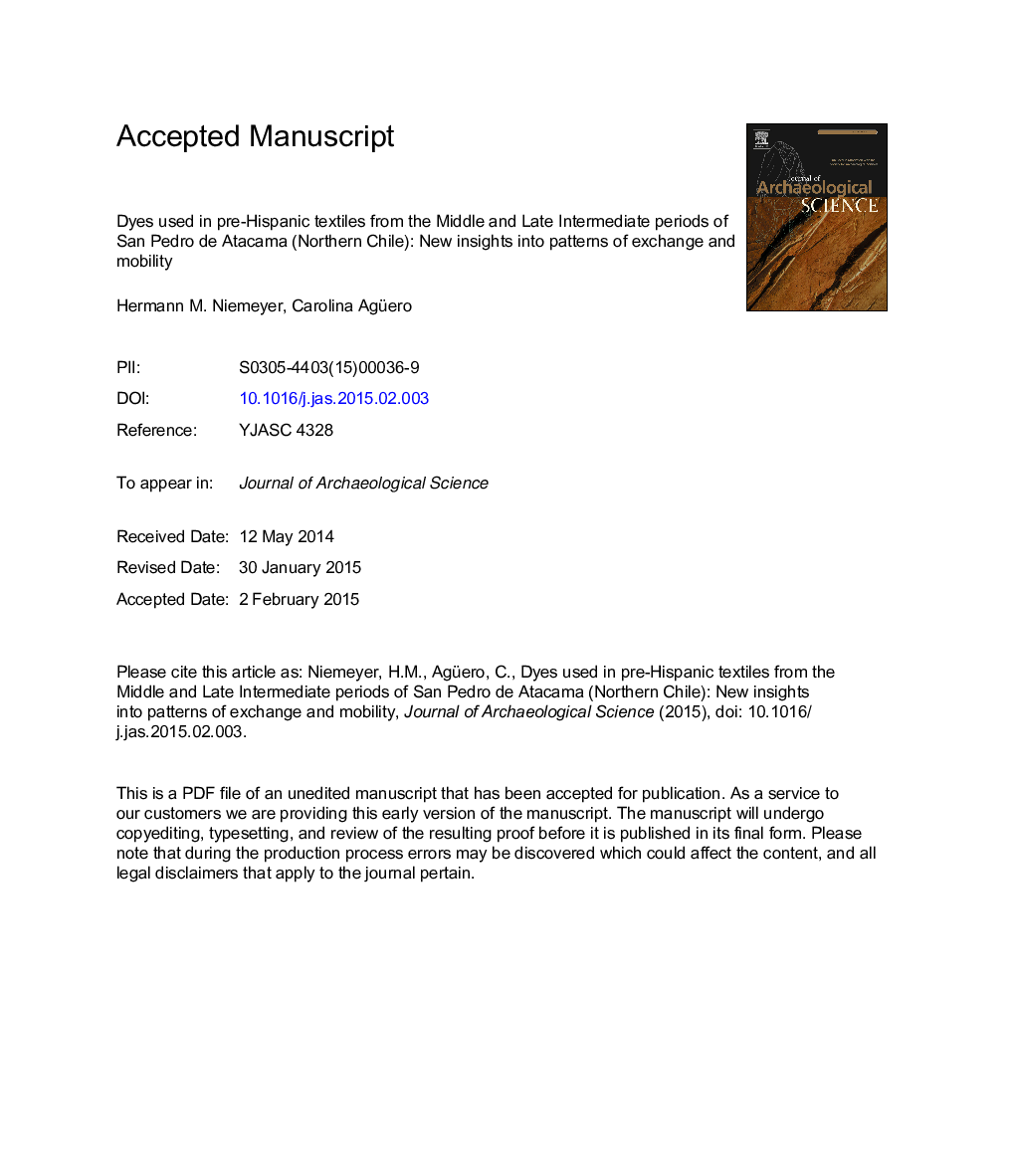| کد مقاله | کد نشریه | سال انتشار | مقاله انگلیسی | نسخه تمام متن |
|---|---|---|---|---|
| 7441958 | 1483903 | 2015 | 59 صفحه PDF | دانلود رایگان |
عنوان انگلیسی مقاله ISI
Dyes used in pre-Hispanic textiles from the Middle and Late Intermediate periods of San Pedro de Atacama (northern Chile): new insights into patterns of exchange and mobility
ترجمه فارسی عنوان
رنگ های مورد استفاده در پارچه های پیش اسپانیایی از دوره های میانی و نیمه میان سان پدرو د آتاکاما (شمال شیلی): بینش جدید به الگوهای تبادل و تحرک
دانلود مقاله + سفارش ترجمه
دانلود مقاله ISI انگلیسی
رایگان برای ایرانیان
کلمات کلیدی
موضوعات مرتبط
مهندسی و علوم پایه
مهندسی مواد
دانش مواد (عمومی)
چکیده انگلیسی
Pre-Hispanic Andean textiles constitute the longest continuous textile record in the world, their structure and design being one of the most significant markers of group identity in Andean populations. Since the Late Formative Period (ca. 100-400Â AD), the region around San Pedro de Atacama (SPA) in the Atacama desert of northern Chile has been part of a complex and extensive network of interacting polities through which raw materials, agricultural products, goods, people and ideas circulated in the South-Central Andes. The archaeological record in SPA abounds with textiles from various cultures that participated in such network. A study of these textiles would allow intercultural as well as diachronical comparisons. Numerous studies on textiles found in SPA have focused on their technological and iconographic features. This work addresses the identification of the organic dyes employed in the manufacture of 38 textiles found in funerary contexts in SPA from the Middle (ca. 400-1000 A.D.) and the Late Intermediate periods (ca. 1000-1450 A.D.), using high performance liquid chromatography with a diode array detector (HPLC-DAD). Purpurin and not alizarin was found in all red dyed fibers and indigotin (IND) and indirubin (INR) in all blue dyed fibers. Natural sources of these dyes are exogenous to SPA; their importation into SPA lasted for nearly a millennium. A positive correlation was found between [IND]/[INR] concentration ratio and the altitude of the place where the fiber was presumably dyed. Overall, the results indicate that finished garments and also raw dyes and ready-to-use dyed fibers were imported into SPA from neighboring regions and that foreign weavers were possibly active at SPA.
ناشر
Database: Elsevier - ScienceDirect (ساینس دایرکت)
Journal: Journal of Archaeological Science - Volume 57, May 2015, Pages 14-23
Journal: Journal of Archaeological Science - Volume 57, May 2015, Pages 14-23
نویسندگان
Hermann M. Niemeyer, Carolina Agüero,
